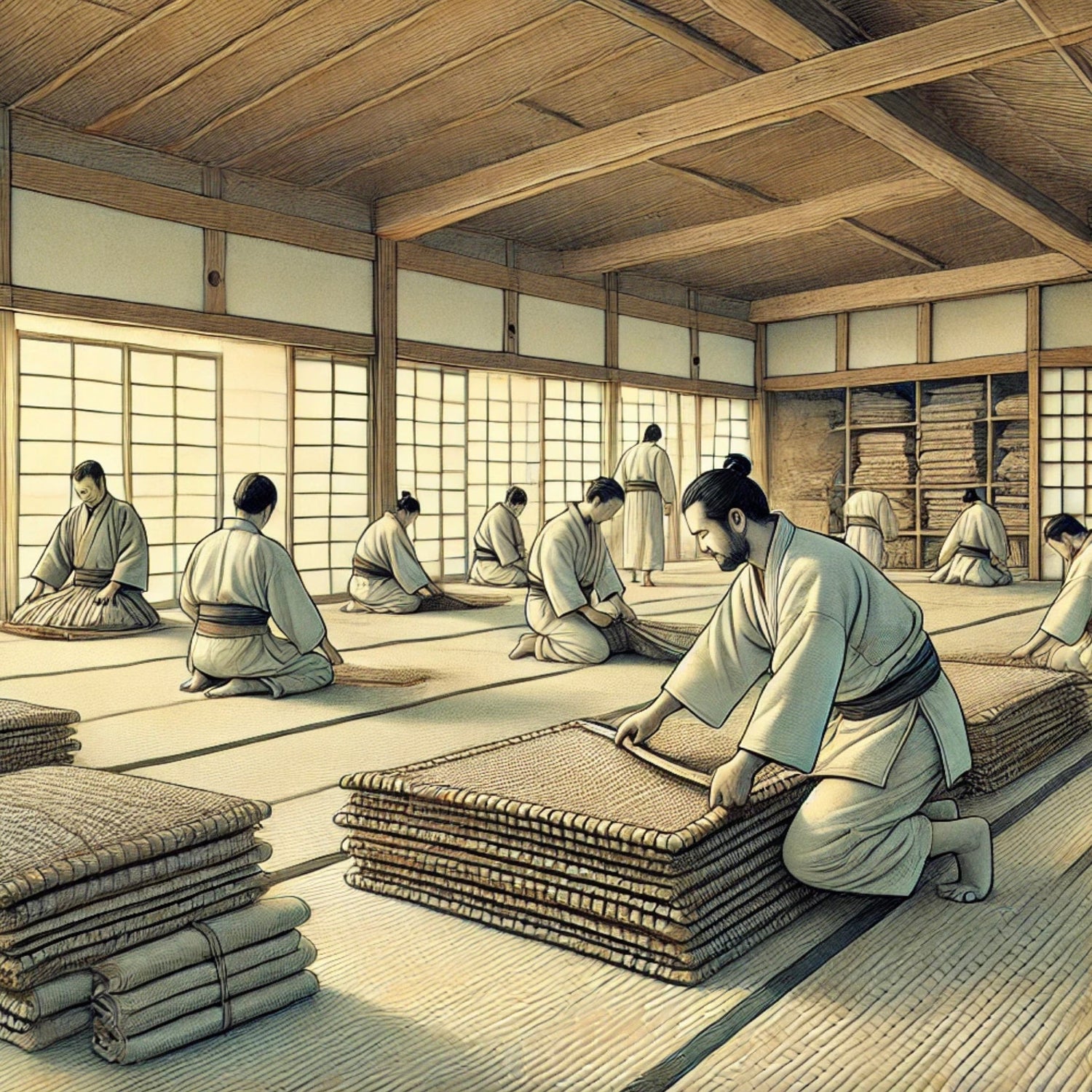
How traditional Judo Tatami use to be made
Unveiling the Art of Crafting Traditional Judo Tatami Mats
Judo, a martial art rooted in tradition, places great emphasis on training surfaces. The iconic tatami mats have been a symbol of this ancient art for generations. But have you ever wondered how these mats are made? Join us on a journey through the intricate process of crafting traditional Judo tatami.
The Origins of Tatami:
Tatami mats have a rich history dating back to ancient Japan. Initially, they were luxury items only accessible to nobility, but over time, they became an integral part of Japanese homes and dojos, especially in martial arts like Judo.
Natural Materials:
The heart of traditional tatami production lies in the choice of materials. The core of tatami mats consists of rice straw, which is first dried, then twisted into ropes, and finally woven into a mat base. The use of rice straw not only provides natural resilience but also imparts a distinctive fragrance to the mats.
Exact Measurements:
Precision is paramount in crafting tatami mats. They are typically made in standardized dimensions, with a standard size being 1 meter by 2 meters. The uniformity allows for consistent training experiences across different dojos.
Covering and Finishing:
The woven straw core is then covered with a tightly woven rush grass (igusa) surface. This top layer not only provides a comfortable texture for training but also contributes to the mat's ability to absorb impact, protecting practitioners during throws and falls.
Assembly and Stitching:
After the core and surface layers are combined, the mats are stitched together using traditional methods. These intricate stitches not only hold the layers together but also add to the aesthetic appeal of the mats.
Natural Dyeing:
Traditional tatami mats are often dyed with natural colours, giving them a distinctive appearance. The use of indigo dye, in particular, is a tradition that dates back centuries, contributing to the mat's beautiful blue-green hue.
A Labor of Love:
Crafting traditional Judo tatami mats is a labour-intensive process that requires a deep understanding of materials and techniques passed down through generations. Today, while modern materials are often used in tatami production, the traditional methods continue to be celebrated and preserved.
In Conclusion:
Traditional Judo tatami mats are not just training surfaces; they are a reflection of the deep-rooted traditions and craftsmanship that underpin the martial arts. Their creation involves a delicate balance of artistry and functionality, making them an essential part of the Judo experience. As practitioners once upon a time step onto these mats, they not only engaged in training but also connected with the rich history and culture of their discipline. These days we're glad to offer higher quality and more impact-absorbent mats to meet the needs of the International Judo Federation as well as more powerful, faster and more action-packed modern martial arts clubs and practitioners. It's always nice to go down memory lane and understand how things such as Judo Mats come to be. For a full list of Fuji Judo Mat colours and sizes simply click here.





